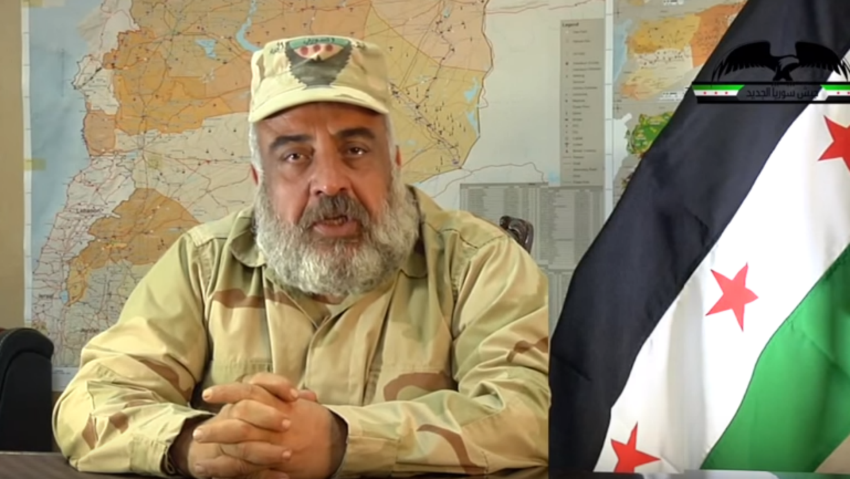PHOTO: New Syrian Army commander Khazal al-Sarhan
Liz Sly writes for The Washington Post:
Throughout the fiasco of the Pentagon’s $500 million effort to train and equip a force of Syrian rebels to take on the Islamic State, one small group endured.
The New Syrian Army completed the U.S. training course in Jordan, infiltrated into Syria and then, in March, without fanfare or publicity, seized a pinprick of territory from the militants at the remote Tanaf border crossing with Iraq in the far southeast corner of the Syrian province of Homs.
There they have remained, holding their ground without deserting, defecting or getting kidnapped, unlike many of the other similarly trained rebels whose mishaps prompted the temporary suspension of the program last year.
Even this modest success is now in jeopardy, however, following an Islamic State suicide attack this month. An armored vehicle barreled into the rebels’ base shortly before dawn on May 7, killing a number of them, said Lt. Col. Mohammed Tallaa, a Syrian officer who defected and is the group’s commander.
Tallaa would not say on the record the precise number of casualties — and the number of rebels at the base — for fear of further endangering the rebels who are left. But he said the attack came as a heavy blow to a force that was already small and suffering from a lack of weaponry and equipment that he said had been promised but not delivered.
Those who survived are now questioning whether they want to remain at all in their sparsely defended desert outpost to await further attacks, Tallaa said in an interview near the southern Turkish town of Reyhanli.
“I’m not saying the Americans let us down, but there is dereliction of duty. They are not doing what they could,” he said. “We don’t want the Americans to disrespect the lives of our men.”
A US military spokesman said warplanes responded to a plea for help when the base was bombed, but did not arrive in time because the attack happened so fast. A number of airstrikes have since been carried out against Islamic State positions in the area and new supplies of weaponry have been delivered, said Col. Steve Warren, the spokesman. He said the US military believes the group will survive.
“They still have Tanaf, they have been resupplied, and we think they can hold,” he said. “We think they have enough firepower, and we are providing support with airstrikes as available.”
Promotional video from November for the New Syria Army
A Series of US Mistakes
The suicide bombing has further exposed, however, the shortcomings and mistakes that have bedeviled from the outset the U.S. endeavor to build a force of Syrians capable of taking on the Islamic State. The $500 million Pentagon program conceived by President Obama two years ago got off to a slow start, with the training beginning only last spring. Months later it was suspended, after the first group of trainees was kidnapped by Jabhat al-Nusra and the second defected, handing over some of their weapons to the al-Qaeda affiliate in the process.
In March, the training was restored, with the less ambitious goal of working with existing rebel groups in northern Syria’s Aleppo province. Those groups are now battling for their survival against Islamic State fighters advancing in the area around the town of Azaz near the border with Turkey.
In the meantime, however, the Pentagon has forged ahead with a different alliance, with the Kurdish People’s Protection Units (YPG), which is seen as a rival or worse by many Arab rebel groups. The YPG is responsible for almost all of the territorial gains made so far against the Islamic State in Syria, and its close coordination with the U.S. military is a source of deep resentment among other Syrian rebels. An effort to rebrand the YPG as a coalition with Arab rebels called the Syrian Democratic Forces has brought only a small number of Arabs into the force so far.

